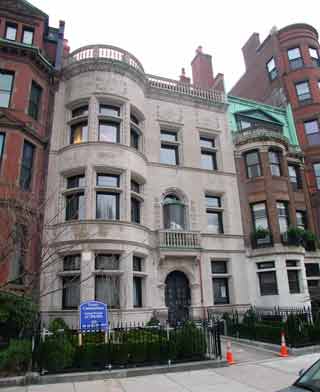
City and State: Boston, Massachusetts
Type of district: National Register historic district, Massachusetts State historic district, local historic district
Main Intersection: River Street, Boston Road and Concord Road
Back Bay Historic District National Register Report
Back Bay Historic District Map
The Back Bay community first established Boston as one of the centers of world culture. A planned community, the transformation of Boston’s Back Bay is considered an outstanding achievement in urban planning for the 19th century. Originally a tidal backwash separating the Boston peninsula along its western border from the town of Brookline, the tidal flats were filled in over a period that spanned from 1857 to the late 1880s. The Back Bay project was one of the largest land reclamation efforts ever undertaken in America. The result was the creation of over 450 acres of dry, usable land and a community that became home to the rich and elite of the city.
The new Back Bay area was laid out as a fashionable residential district by the architect Arthur Gilman in 1856. Gilman developed a plan for the area that reflected American interest in French architecture and city planning. The cohesiveness of his plan was ensured by a number of farsighted zoning and building restrictions, including mandatory building setbacks, limits on building height, and the confining of building materials to masonry and brick. The plan was a success. Back Bay is still considered one of the finest zones of Victorian houses in America and has the residential appeal it did when it was first developed. The buildings reflect the conservative nature of Boston patrons in the reserved compositions of their façades.
Two Back Bay landmarks, Richardson’s Trinity Church and McKim’s Boston Public Library face each other across Copley Square. They are considered by architectural historians to be perhaps the two most important and stylistically influential buildings designed in America after the Civil War. Each is credited with having changed the course of American architectural taste in its generation.
